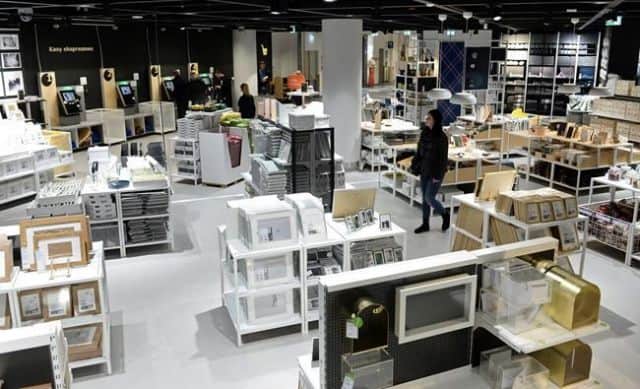
An airport worker drops by Warsaw’s newest Ikea store during her lunch break to finish up plans for a home refurbishment. Around her, people drift in and out of the shop, placing small houseware items in big yellow bags as cafe tables fill up with people just stopping in for lunch.
The store is not one of Ikea’s out-of-the-way, maze-like warehouses that require a car to visit, but a shop like any other in a city centre shopping mall. The Swedish retailing giant plans to open 30 such smaller stores in major cities around the world as part of a broader transformation to adapt to changing consumer habits. Compared with just a decade ago, shoppers are more likely to be living in urban areas and not have a car, and often want a nearby location to look at goods like furniture in person before ordering things online.
“I like the idea because you can come any time,” said 29-year-old Angelika Singh, the airport worker, as she finalized an order for a new kitchen. “Mostly when you go to Ikea you need to have a whole day free, or at least half a day free, because it’s far.”
Warsaw’s store is located on two floors covering nearly 5,000 square meters (54,000 square feet), about one-fourth of a traditional big-box store. Similar stores have also opened in major cities like London and Madrid and more are expected, with one due next year in Paris, among other locations.
Shoppers can buy cushions, curtains and other home items. They can design the layout of bedrooms and kitchens at computer stations. But those hoping to buy a bookcase or bed will not find them stocked in a large warehouse, though they can order them at kiosks and have them delivered to their homes.
As such, it offers a very different shopping experience from the usual visit to one of the large warehouse stores.
“Ikea’s been doing pretty much the same for 70 years. It’s been a cash-and-carry company, and it still is for the majority of its sales,” said Andreas Flygare, the project manager for the Warsaw store. Now, he explained, the company must adapt to a consumer environment that has changed dramatically in the last 10 years.
“You have companies like Amazon and Uber that are raising the bar for what is expected. Because if you can have same-day delivery, or an Uber is two minutes away, it influences other companies, like Ikea,” he said in a recent interview in the store’s cafe. “It can be a quite tough environment. Everything is changing so fast.”
While Ikea is still profitable, its earnings have recently been growing more slowly than expected.


